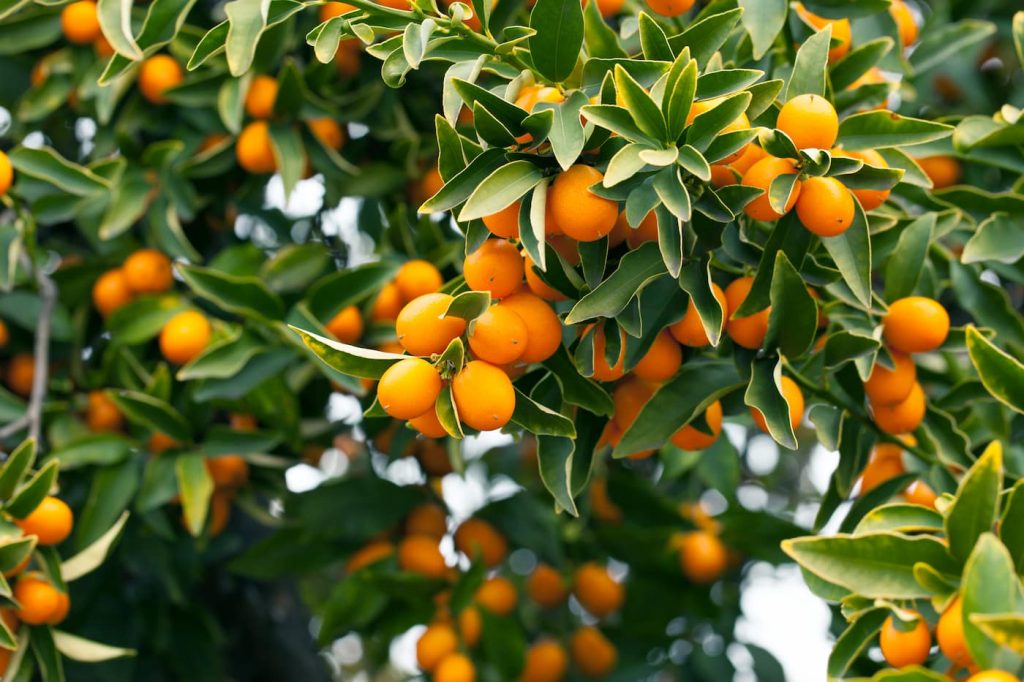
In the county of Rong’an, located in southern China, one encounters one of the most peculiar citrus fruits – the kumquat. With its unique feature of being edible without the need for peeling, the kumquat has captured the taste buds of people worldwide. Its peel, known as the flavedo, offers a sweet flavor, while the pulp inside is tart, creating a delightful balance for the taste buds. Perhaps you’ve spotted a tray of these small, oval-shaped fruits in a local fruit shop, almost resembling a select delicacy. Their vibrant orange color and distinctive size, similar to a large olive, make them easily recognizable.
The kumquat goes by various scientific names, reflecting its complex genetic history within the citrus family. Over the centuries, numerous species and varieties of citrus have interbred, resulting in a labyrinth of genetic diversity. Initially classified as Fortunella margarita or Fortunella japonica var. margarita, the kumquat is now officially recognized within the Citrus genus, often referred to as Citrus margarita or, more accurately, Citrus japonica. Specifically, it is considered a cultivar within the species Citrus japonica, known as ‘Nagami.’ Common names for this fruit include oval kumquat, kumquat nagami, or simply kumquat, while in Spain, it is affectionately called “naranjito chino.”
As a native of China, like many other citrus fruits consumed globally today, the kumquat is rapidly gaining popularity due to its aesthetic and gastronomic qualities. While there are other species and varieties of kumquats with smaller fruits and different colorations, such as those resembling mandarins (Citrus x reticulata), the palatability of the oval kumquat is unparalleled.
There are numerous reasons to cultivate kumquats at home, with one of their strengths being their cold resistance, tolerating temperatures as low as -10 degrees Celsius. After emerging from winter dormancy, kumquats require several weeks of warmth to produce their small, highly aromatic white flowers, reminiscent of orange blossom flowers, emitting a similar soft and sweet fragrance. During the summer, they thrive in regions where temperatures do not exceed 30 degrees Celsius, although they can tolerate higher temperatures, albeit with slower growth or even dormancy. Like other citrus plants, kumquats require direct sunlight for optimal development, although they can also thrive in bright, indirect light, albeit with reduced flowering.
Another advantage of kumquats is their adaptability to container gardening, thriving in pots and adapting well to limited space. Adequate fertilization, using citrus-specific fertilizer to provide essential nutrients such as magnesium, is crucial for abundant fruit production during winter and early spring. In pots, a single plant can yield hundreds of fruits, delighting family and friends. When planted in the ground, kumquats prefer slightly acidic soil with a pH below 7, and they can grow over 3 meters tall with a bushy, aesthetically pleasing appearance.
Ultimately, cultivating a kumquat is an excellent choice for beginners interested in growing citrus plants and experiencing the beauty they bring to all the senses. Whether enjoyed fresh or used in culinary creations, the kumquat’s unique flavor and versatility make it a prized addition to any garden or fruit bowl.
Conclusion:
The kumquat, with its edible peel and delightful balance of sweet and tart flavors, is a citrus marvel that has captured the attention of people worldwide. Originating from southern China, this fruit is gaining popularity due to its aesthetic appeal, cold resistance, and adaptability to container gardening. Whether grown for its ornamental value or culinary potential, the kumquat offers a rewarding experience for gardeners of all levels. With its vibrant colors, aromatic flowers, and abundant fruit production, the kumquat stands out as a unique and versatile addition to any garden or home.